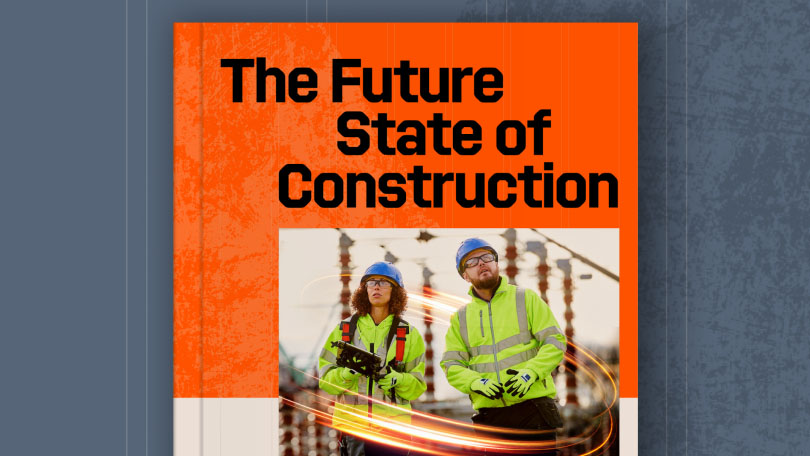— 5 min read
Monitoring Project Schedules and Resources in Construction
Last Updated Aug 28, 2025

Nicholas Dunbar
Content Manager
62 articles
Nick Dunbar oversees the creation and management of UK and Ireland educational content at Procore. Previously, he worked as a sustainability writer at the Building Research Establishment and served as a sustainability consultant within the built environment sector. Nick holds degrees in industrial sustainability and environmental sciences and lives in Camden, London.
Last Updated Aug 28, 2025

Construction projects have many moving parts: the materials, equipment, teams, deliveries, contracts, schedules — this list just scratches the surface. With so many elements to factor in, it takes the close monitoring of an experienced construction project manager and their team to keep everything on time and on budget.
How a construction project manager or construction manager chooses to monitor a project depends on how complex the project is. The scope of work, the dependencies and the goals of a project all have an impact. Thoughtful oversight of the scheduling, finances and resources is required to maintain steady progress.
Monitoring varies from project to project. It depends on what items need to be scheduled and ordered, how much storage you have, the teams that will be working on it, and so on. You need to have a tailored approach to each project.
Paul Chisholm
Senior Project Manager & QS Cost Consultant
Investec Construction
Table of contents
The Importance of Building in Buffers
From a resources point of view, one of the areas that has the most potential to cause problems and delays is procurement. Some materials have much longer lead times than others, especially if they are sourced from different countries or if they are made to order. It’s crucial to factor this into the construction programme, and to build in time buffers so you have some leeway with deliveries.
Building in buffers is absolutely key. When you have leeway, if you do hit problems, you know it’s not going to affect your critical path.
Paul Chisholm
Senior Project Manager & QS Cost Consultant
Investec Construction
Other materials have shorter lead times, so there’s not as much urgency for ordering them. If your storage space is limited, the items with shorter lead times can be ordered closer to when they’re needed, which we call ‘just-in-time deliveries’.
You’ve also got to factor in the human resources, and make sure that you have the deliveries in time for when different teams need to use materials on site. Aligning deliveries with the availability of your workforce is crucial, as you don’t want expensive craftsmen on a day rate to be waiting around with no equipment or materials.
Some projects have very sensitive timelines, which adds another layer of urgency to the schedule. For these projects, it’s even more important that you hit your milestones at the right time. Delays on projects like these can lead to costly fees and loss of profits, as it’s common for there to be penalties when there is a hard deadline.
How Proactively Managing Personnel Affects the Programme
While a detailed programme and strong resource planning make a big difference to how smoothly a construction project operates, you’ve also got to have a risk management process in place to handle problems and changes. These could be logistical issues with the availability of materials and equipment, or problems with personnel, to name just two examples. Dealing with these problems well comes with experience, and it’s often a good idea to talk to people who have more experience to see how they’d tackle a problem.
When it comes to personnel, you can avoid a lot of problems with good leadership. For a project to go well, you need strong teamwork. If you’ve got a strong team leader that everyone respects and appreciates, you’ll usually find that the team work well together.
If the person leading the team is ambitious, they’ll push other people in the team to better themselves too. A strong team leader is a key ingredient for success.
Paul Chisholm
Senior Project Manager & QS Cost Consultant
Investec Construction
Dynamics are always different, but leadership goes a long way. Good communication and fair, prompt payment foster a positive atmosphere on site. And when the atmosphere is good, you’re more likely to find people tackle problems collaboratively and proactively. This helps to reduce bottlenecks and prevent rework.
Adapting to Unexpected Changes
It’s very rare for a construction project to go exactly as planned, adhering to every detail of the programme. The ability to adapt to changes is one of the most important skills for construction leaders, as it’s part and parcel of working in the industry. Changes in designs and to the availability of materials and personnel can all cause minor interruptions that if left unaddressed can snowball into major issues.
To deal with these issues while causing as little disruption to the programme as possible, you’ve got to have a rigorous approach to problem solving. You need to identify what the problem is at its root cause before you try and solve it. When you fully understand the cause and conditions of the problem, then you can troubleshoot it.
If, for example, an item has been delivered and there are quality issues, you need to start looking at other viable options as soon as possible. You also don’t want to surprise the client with a different material, so you’ve got to be upfront about it. You can’t hide much in construction — different materials, colours and texture are obvious.
Paul Chisholm
Senior Project Manager & QS Cost Consultant
Investec Construction
Part of staying on top of changes and variations is documenting them so you have a record of every decision that was made, the change to the design or materials and the additional labour that was needed. Generally, teams will have a way of recording variations on site, whether in a variation book or electronically.
Close Monitoring Means Better Project Outcomes
Overall, keeping a close eye on whether deliveries and work are happening as outlined in the schedule means you’ll be able to intercept any issues more easily, helping you align with the programme as closely as possible. There will always be some flex — this is just part of working in construction. But by planning thoroughly, putting buffers in place, leading effectively and staying vigilant, you can minimise disruptions and hand over a great project to the client.
Categories:
Written by
Reviewed by

Nicholas Dunbar
Content Manager | Procore
62 articles
Nick Dunbar oversees the creation and management of UK and Ireland educational content at Procore. Previously, he worked as a sustainability writer at the Building Research Establishment and served as a sustainability consultant within the built environment sector. Nick holds degrees in industrial sustainability and environmental sciences and lives in Camden, London.
View profileExplore more helpful resources

Control the Chaos: Standardising Document Workflows in Construction Projects
Document control and implementation play a central role in managing risk, meeting deadlines, and delivering projects to spec. As builds become more complex and teams increasingly disperse, the volume and...

Cost-Plus Construction Contracts in the UK
A construction cost-plus contract – sometimes called a cost-reimbursable or prime cost contract – reimburses all project costs and adds a fee to cover the contractor’s overhead and profit. UK...

Digital Construction Technology for Whole-Life Value
For decades, the construction industry has kept a narrow focus on capital cost — the one-time, upfront costs of a construction project. While in the short term this seems like...

UK Construction Progress Reports: Tools for Smarter Site Management
Construction progress reports track completed work, on site issues, costs, and safety so UK project teams can demonstrate progress, secure payments, and stay on programme. Accurate progress data is essential...
